Use What You Know About Contour Lines and Gradient to Determine Which Hillside Is Steeper
Forested ecosystems occupy a rich array of varied landforms. In the Pacific Northwest, this variety is readily apparent as one surveys the landscape– volcanic peaks dissimilarity with broad valleys; steep, forested hillsides surround gently rolling savannas; and rapidly cascading mountain streams transition to meandering river floodplains. This varied topography is an integral function of the woods, influencing climate, soils, water, vegetation and aquatic life (Figure 1.1). Natural resource technicians are often called upon to appraise the topography, and one of the common elements measured is the slope of the land. How steep is a hillside? Does it drain to a stream? Are there cliffs or bluffs nowadays? Topographical field information nerveless past technicians are used to inform decisions almost land management activities such as providing shade for streams, building roads or trails, and prescribing timber harvesting operations.
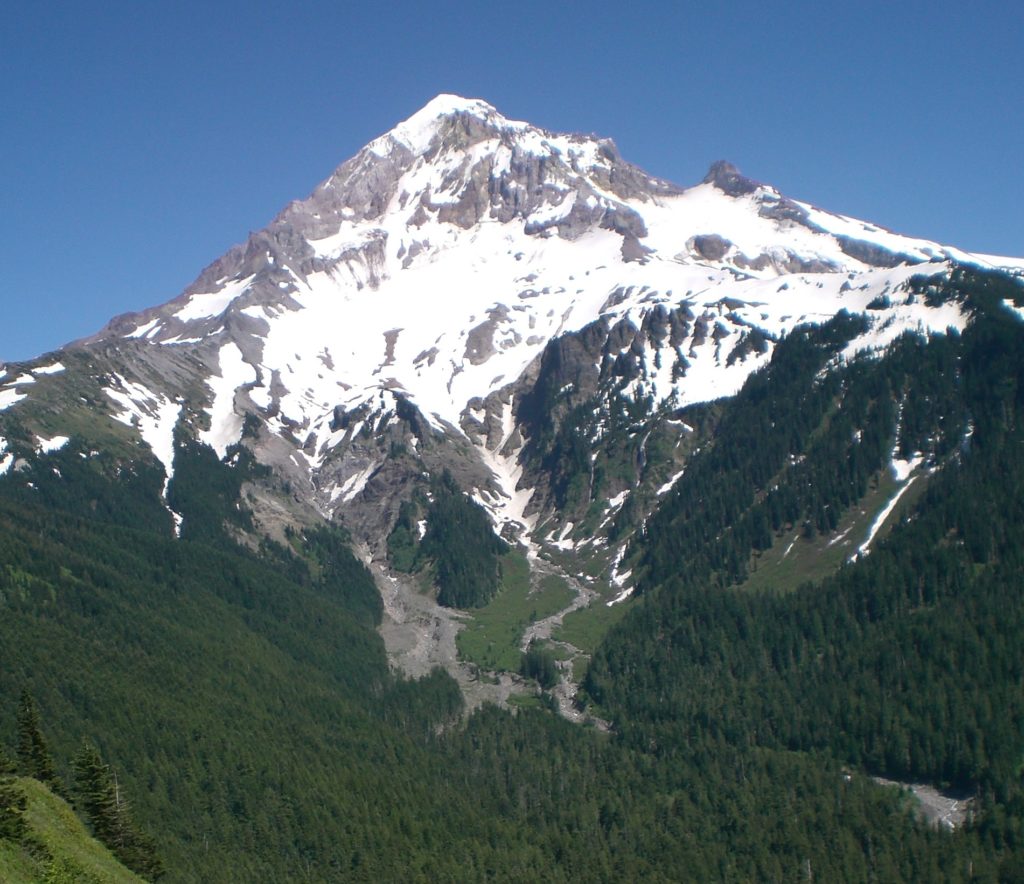
Defining Gradient
Slope is substantially the gradient or incline of the land. A steep gradient refers to a sharp incline; a gentle slope to a slight incline. The steep, forested slopes in Figure ane.1 contrast with the gentler slope of the river's path as information technology flows between them.
Driving downward a highway you may see a route sign that reads "half-dozen% Form" or "Steep Grade." The course of the road is, essentially, its gradient. The sign in Figure 1.ii indicates that the road descends at a six pct grade or a half-dozenpercent gradient.
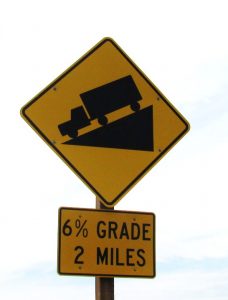
A six pct slope ways that the road elevation changes 6 feet for every 100 feet of horizontal distance (Figure ane.three).

Mathematically, slope is defined equally "the rise over the run " (or the rise divided by the run), in which rise equals change in top and run equals horizontal altitude:
[latex]\displaystyle slope=\frac{{rise}}{{run}}[/latex] or [latex]\frac{{\text{elevation change}}}{{\text{horizontal distance}}}[/latex] or in this case: [latex]\frac{{\text{6 ft}\text{.}}}{{\text{100 ft}\text{.}}}=.06[/latex]
To limited slope as percent slope, only multiply the slope fraction by 100. So, .06 = six%.
[latex]\displaystyle \left( {\frac{{rise}}{{run}}} \right)\left( {100} \right)=[/latex]%gradient
[latex]\left( {\frac{{6ft}}{{100ft}}} \right)\left( {100} \right)=[/latex]6%
In the route example below, the six-foot change in top is the rising, and the 100-foot horizontal distance of the road is the run. Driving uphill means climbing a "positive" six pct slope (Figure A). Driving downhill, the "rise" is actually a drop, and then there is a "negative," or downhill, slope (Figure B). When dealing with slope, a positive gradient simply ways uphill and a negative slope ways downhill. A negative number does non mean "minus" as in algebraic expressions.
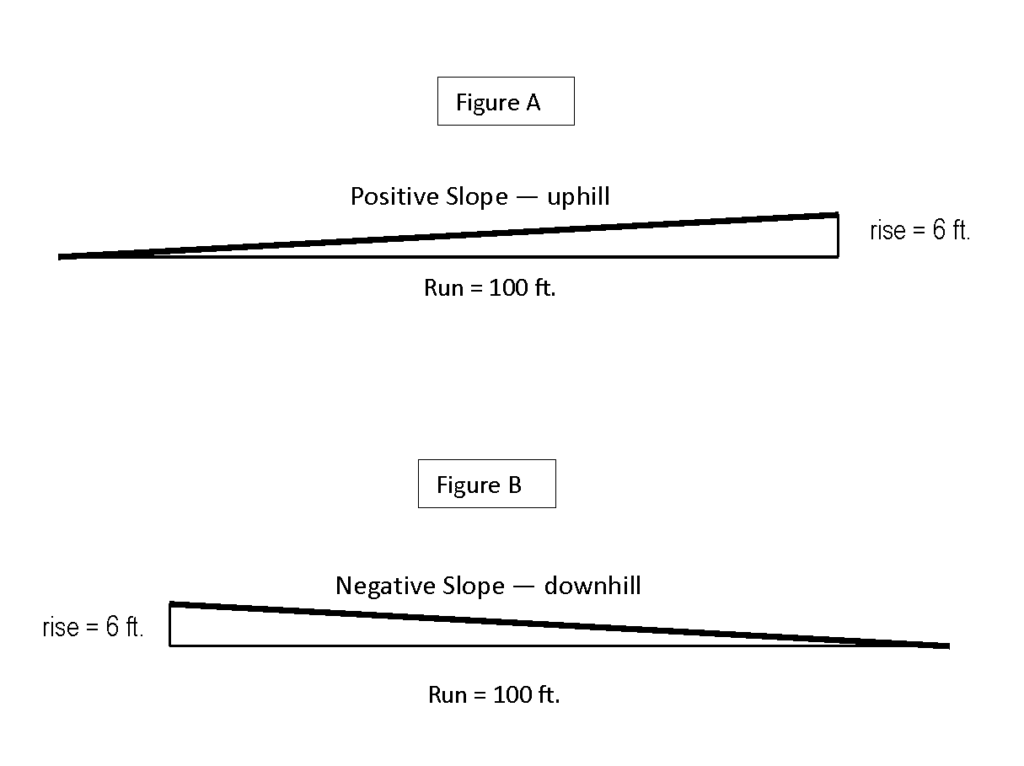
Note that the bodily road distance is the hypotenuse of the illustrated slope triangle. This length is called slope distance. Slope distance is e'er longer than the horizontal altitude, or run. Applying the Pythagorean theorem (aii + bii = ctwo) to this triangle, the slope distance, or hypotenuse (c) can exist calculated.
atwo + b2 = ctwo where: 100ii + 6two = cii 10,036 = ctwo [latex]\sqrt{{10,036}}=100.2[/latex]ft.
a = horizontal distance or run (in this instance 100 ft.)
b= modify in peak or rise (in this case six ft.)
c = route distance or slope distance (in this example 100.2 ft.)
The slope distance is 100.two ft. for a run of 100 ft. As you can run into from this example, in a forest, a six percent slope would exist considered a gentle slope.
Note that %gradient is unitless and proportional. Therefore, it can exist practical to whatever unit of measure out (inches, yards, centimeters, etc.) and to any length. For case, a 25 percent slope is simply a ratio of 25:100. The 25 pct slope below shows that the slope rises .25 inches for every inch of horizontal distance. The gradient rises 2.5 centimeters or every 10 centimeters of horizontal distance, and it rises ane.25 inches for every 5 inches of horizontal distance.
.

Using Slope
When writing field notes nearly a site, technicians include data almost the slope of the land. Sometimes a crude guess of the average slope is sufficient; sometimes detailed measurements of slope are required. For case, a site description might read:
"A timber cruise was conducted on twenty acres of mixed conifer wood. Approximately half of the acreage was flat, on slopes ranging from three-seven%. The other half of the acreage was steeper; with southwest slopes 40-60%."
This description conveys much more about the site than simply stating that there were 20 acres of mixed forest. The flatter ground would probable have dissimilar soil conditions and unlike vegetation than the steeper slopes, and therefore, mayhap, require different management. Let'due south say that these 20 acres are to be logged in the virtually future. If this is and so, the forester will take to plan where to place any new access roads, where to locate landings for yarding the logs and what blazon of harvesting equipment to use. The topography will definitely be considered, as the gradient of whatever new spur roads should non exceed ten%, and a cable organization should be used to haul logs up to landings on slopes greater than 30% (Figure 1.4).

Sometimes, more information than general field notes is required for prescribing management activities. Profiles may be run to get a detailed picture of a slope. To do then, the hillside is divided into segments where major changes in gradient occur. For each segment, a %slope reading is taken. These readings are combined with measurements of the slope distance for each segment to create a contour or sketch of the loma like the one illustrated (Figure 1.5). With this precise information, for example, a logging system tin can be designed that will lift logs off the footing while yarding to reduce erosion.
.

Note that slopes can exceed 100 percent (see +148% in Figure 1.5). When a gradient equals 100 percent, it just ways that the rise is equal to the run. And although information technology certainly feels similar you are climbing direct up on a 100 percentage gradient (pulling yourself upwards using roots and anything else you tin grab), y'all are actually walking upwards at a 45° angle, not a ninety° bending.
[latex]\displaystyle \left( {\frac{{ascension}}{{run}}} \right)\left( {100} \right)=[/latex]%slope
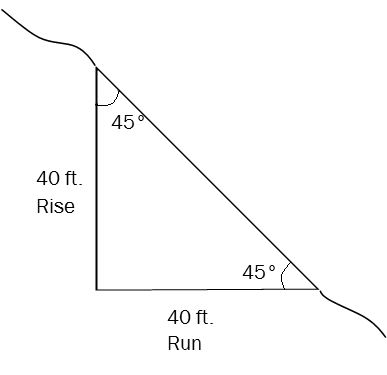
If ascent = run as illustrated above: [latex]\displaystyle \left( {\frac{{40}}{{40}}} \right)\left( {100} \correct)=[/latex]100%
100% slope = 45º bending slope
Other examples in which %slope is measured in natural resource settings include hiking trails and streams. Switchbacks on steep slopes reduce trail erosion and make for easier hiking. Some trails are kept to 8 percentage to comply with American with Disabilities Act (ADA) guidelines for wheelchair access.
Stream gradients vary, reflecting the terrain over which they flow at each phase of their journey to large rivers. Small tributaries often are the steepest, cascading down steep forested slopes at gradients of 60–100 percent slope or more. As streams merge downriver, the terrain often flattens out, and milder gradients of 3–10 percent slope may be measured (Effigy i.6).
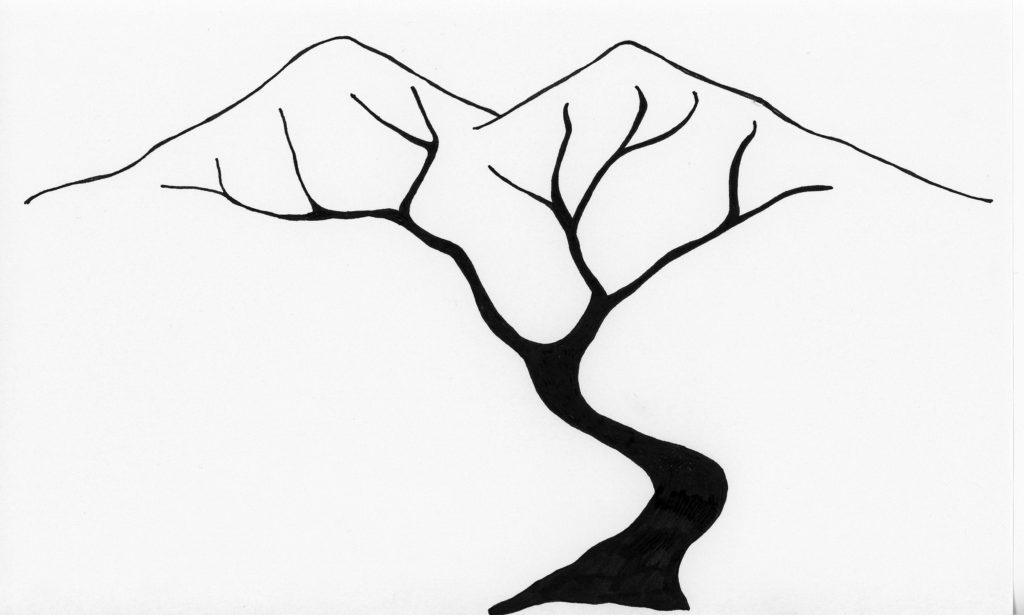
Source: https://openoregon.pressbooks.pub/forestmeasurements/chapter/1-1-assessing-slope-of-the-land/
0 Response to "Use What You Know About Contour Lines and Gradient to Determine Which Hillside Is Steeper"
Post a Comment